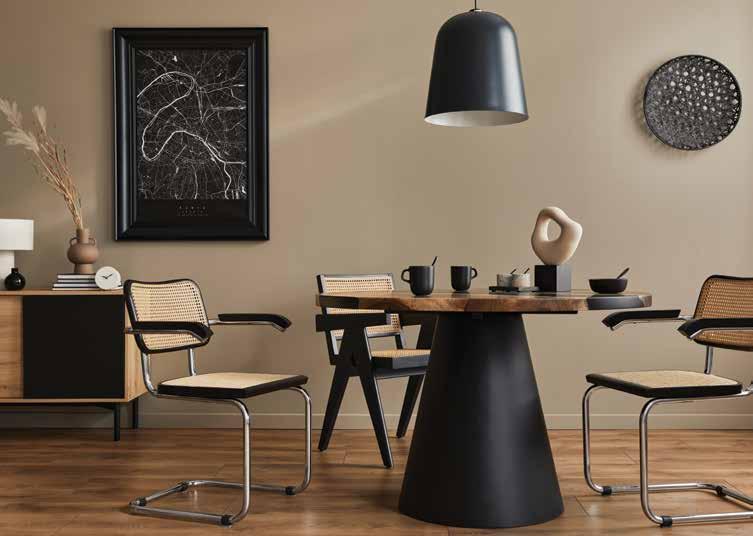
2 minute read
DINING ROOM
from Design 101
How to Arrange Dining Room Furniture

Advertisement
Consider how you use your dining room, such as for family-style meals or buffet-style serving, to determine the ideal furniture arrangement. Make furniture choices that support your needs, and place furniture in a room-appropriate layout. If you prefer buffet-style serving, a dining room furniture arrangement with plenty of walking space in-between the chairs and the buffet table is necessary.
Furniture Arranging Ideas for Dining Tables
Circular tables with pedestal bases let diners easily see everyone at the table and are suitable for tight dining spaces or square rooms. Rectangular tables limit seating, but they work well in rectangular dining rooms and come in a variety of lengths and widths. Oval tables with added leaves also work well in rectangular dining rooms and offer flexibility by adapting to small or large gatherings.
Furniture Arranging Ideas for a Rectangular Dining Room
In a rectangular dining space with no free walls, mix furniture pieces like chairs, benches, and settees for an eclectic look. For the best dining room furniture arrangement, duplicate the room shape with the shape of the table to maximize seating. Include storage, such as cabinets or bookcases, on the perimeter. Define the dining space with a rug that contrasts with the flooring.
Large Dining Room Furniture Arrangement
In an oversized dining space, opt for a table that preserves open space for other uses. Add storage that will accommodate all the activities that take place in the room. When choosing chairs, select models that can also easily be brought up to the table for extra dining seating. Anchor the secondary seating areas with lamps and occasional tables. A good living room/dining room combo furniture arrangement looks natural and allows for meals and entertainment to coexist seamlessly.
Functional Dining Room Furniture Arrangement
Make the most of your dining room furniture arrangement with a wall of shelves that can provide multi-purpose storage. Store essentials for the dining room's alternative uses, such as office supplies, games, and crafts, or dining extras such as china, linens, and barware. If you don't want the contents of the cubbies showing, string a curtain across the front of the shelving system.
Dining Room Furniture
Arranging with Lights Choose and place lighting that adapts to the room's functions. For example, hang the chandelier with extra cord length so it can be adjusted for homework or dining. Use dimmer switches, lamps, and sconces to set the mood for the occasion.
Dining Room Furniture Arranging Tips
For an optimal dining room furniture arrangement, be sure to allow a minimum of 36 inches from the table to the wall on all sides. Position the table so traffic flows smoothly around it and chairs have plenty of space to slide out. If space allows, you can even slip a sofa along a wall in your dining room for more casual conversation post-dinner.

Measurements for Dining Room Furniture Arrangements
When determining how many chairs you can fit around your table, allow for a width of 20 to 24 inches and a depth of 15 inches per place setting. You should also plan to leave at least six inches between chairs. This furniture arranging tip will keep guests comfortable and not too close.
As you arrange furniture in your home, keep in mind functionality, measurements, and style to maximize your space.





